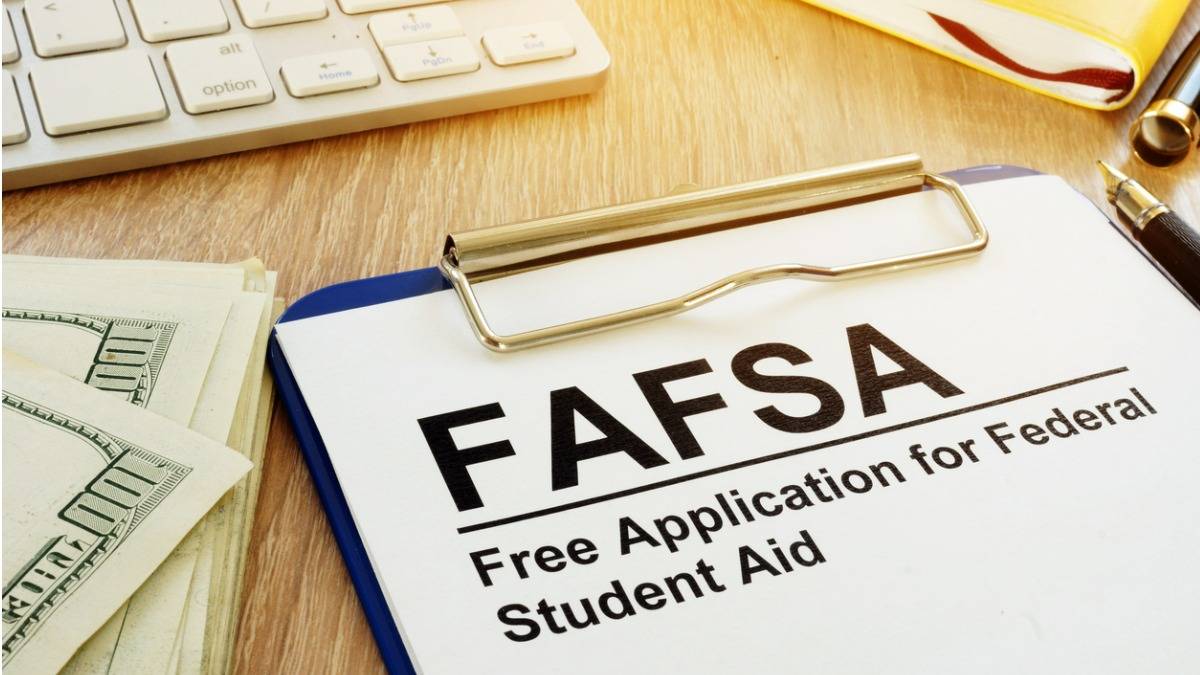Home>Finance>How To Get Out Of Garnishment With A Student Loan


Finance
How To Get Out Of Garnishment With A Student Loan
Published: October 20, 2023
Looking for ways to get out of garnishment with your student loan? Find effective financial strategies and tips in our comprehensive guide on finance.
(Many of the links in this article redirect to a specific reviewed product. Your purchase of these products through affiliate links helps to generate commission for LiveWell, at no extra cost. Learn more)
Table of Contents
- Introduction
- Understanding Garnishment with a Student Loan
- Evaluating Your Financial Situation
- Exploring Options for Dealing with Garnishment
- Applying for Student Loan Rehabilitation
- Applying for Student Loan Consolidation
- Requesting a Hardship Discharge
- Seeking Legal Assistance
- Final Thoughts
- Additional Resources
Introduction
Garnishment is a legal process that allows creditors to collect a portion of your wages or assets to repay a debt. If you have a student loan that is in default, you may find yourself facing garnishment, which can be financially overwhelming. However, there are steps you can take to get out of garnishment and regain control of your finances.
Understanding the garnishment process and its implications is the first step towards finding a solution. This article will guide you through the process of getting out of garnishment with a student loan and provide you with options to consider based on your financial situation.
It’s important to note that garnishment laws may vary depending on your country and state, so it’s essential to consult with a legal professional to understand the specific regulations that apply to your situation. However, the general strategies outlined in this article can help you navigate the process and take proactive steps towards resolving your student loan garnishment.
Whether you’re dealing with wage garnishments or bank account levies, it’s crucial to take action as soon as possible. Ignoring the issue will only lead to further financial hardship.
So, let’s dive into the process of getting out of garnishment with a student loan and explore the potential options available to you.
Understanding Garnishment with a Student Loan
Garnishment occurs when a creditor obtains a court order to collect a debt by deducting money directly from your wages or bank account. In the case of a student loan, if you default on your payments, the loan servicer may pursue garnishment as a means of recovering the overdue amount.
When it comes to student loans, there are two types of garnishment: wage garnishment and non-wage garnishment.
Wage Garnishment: This involves the loan servicer or debt collector obtaining a court order to deduct a portion of your wages directly from your paycheck. The amount that can be garnished depends on the laws of your state, but it is typically a percentage of your disposable income.
Non-wage Garnishment: This involves the loan servicer or debt collector obtaining a court order to seize funds from your bank account. Again, the specific rules and regulations for non-wage garnishment may vary depending on your location.
It’s important to note that before garnishment can occur, the loan servicer or debt collector must take certain steps to notify you of the impending garnishment and give you an opportunity to resolve the debt through other means. This typically involves sending you notices by mail and providing you with an opportunity to enter into a repayment plan or make arrangements to pay off the debt.
Once the garnishment process begins, it can have significant financial implications. Your take-home pay will be reduced, making it harder to meet your basic living expenses and may lead to further financial hardships, such as falling behind on other bills and obligations.
Understanding the garnishment process and the potential consequences is crucial for taking appropriate action to get out of garnishment and regain control of your financial situation. In the next section, we will discuss how to evaluate your financial standing to determine the best course of action.
Evaluating Your Financial Situation
Before deciding on a specific strategy to get out of garnishment with a student loan, it’s important to assess your financial situation. This evaluation will help you determine the most suitable approach to resolve the debt and prevent future garnishment.
Here are some key factors to consider when evaluating your financial standing:
- Income and Expenses: Take a close look at your monthly income and expenses. Calculate your net income after taxes and deduct your essential expenses such as rent, utilities, groceries, and transportation. This will give you a clearer picture of how much disposable income you have available to address your student loan debt.
- Other Debts: Assess any other debts you may have, such as credit card balances, medical bills, or personal loans. Understanding your overall debt burden will help you prioritize and strategize your repayment efforts.
- Savings and Assets: Evaluate your savings and assets, including any investments, real estate, or valuable possessions. While tapping into savings or selling assets should be a last resort, it’s important to consider these options to alleviate your financial situation.
- Financial Goals: Determine your short-term and long-term financial goals. Are you looking to resolve your student loan debt as quickly as possible, or are you comfortable with a longer-term repayment plan that allows you to manage your monthly cash flow more effectively?
- Available Options: Familiarize yourself with the available options for dealing with student loan garnishment. These can include loan rehabilitation, consolidation, hardship discharge, or seeking legal assistance. Understanding the pros and cons of each option will help you make an informed decision.
By thoroughly evaluating your financial situation, you can gain a deeper understanding of your ability to repay your student loan and develop a plan of action to get out of garnishment. Remember, it’s crucial to be honest and realistic about your financial capabilities to ensure you choose the most suitable solution for your circumstances.
Now that you have assessed your financial standing, let’s explore the potential options for dealing with garnishment in the next section.
Exploring Options for Dealing with Garnishment
When facing garnishment with a student loan, it’s important to explore the available options to address the debt and stop the garnishment process. Let’s take a look at some potential strategies you can consider:
- Student Loan Rehabilitation: One option is to apply for student loan rehabilitation. This involves entering into an agreement with the loan servicer to make a series of voluntary, affordable monthly payments over a specified period of time. Successful completion of the rehabilitation program will result in the removal of the garnishment and the reinstatement of your loan into good standing.
- Student Loan Consolidation: Consolidating your student loans can be another effective strategy. This involves combining multiple federal student loans into a single loan with a new repayment term and interest rate. By consolidating your loans, you can potentially lower your monthly payments and reduce the likelihood of garnishment.
- Hardship Discharge: In certain circumstances, you may qualify for a hardship discharge, which means your student loan debt is forgiven due to your inability to repay. Hardship discharges are typically granted in cases of permanent disability, bankruptcy, or the closure of the school where you obtained the loan.
- Seeking Legal Assistance: If you believe that the garnishment is unjustified or violates your rights, it may be necessary to consult with a legal professional. They can assess your case, provide guidance on legal options, and potentially challenge the garnishment in court.
- Repayment Negotiation: Contacting the loan servicer and discussing your financial situation may lead to a negotiated repayment plan that is more manageable for you. They may be willing to modify the terms of your loan to accommodate your financial circumstances and prevent further garnishment.
It’s important to note that these options may not be available in all situations, and their effectiveness can vary depending on your specific circumstances. Consulting with a financial advisor or student loan expert can help guide you towards the most appropriate solution for your situation.
Remember, taking proactive steps to address your student loan debt is crucial in order to prevent further financial hardship. In the next sections, we will dive deeper into the application processes for student loan rehabilitation and consolidation.
Applying for Student Loan Rehabilitation
One option to get out of garnishment with a student loan is to apply for loan rehabilitation. This program allows you to regain control of your loan by making affordable monthly payments over a specified period of time.
To apply for student loan rehabilitation, follow these steps:
- Contact the Loan Servicer: Reach out to the loan servicer handling your student loan and express your interest in the loan rehabilitation program. They will provide you with the necessary information and guide you through the application process.
- Provide Financial Information: As part of the application, you will need to provide detailed financial information, including income, expenses, and any other outstanding debts. This information will help the loan servicer determine the monthly payment amount you can afford.
- Set Up an Affordable Payment Plan: Once the loan servicer reviews your financial information, they will work with you to establish a monthly payment plan that fits within your budget. The monthly amount will be based on your income and expenses, and is typically a reasonable percentage of your discretionary income.
- Make On-Time Payments: It’s crucial to make all rehabilitation payments on time. Typically, the rehabilitation period lasts for nine months, during which you must make the agreed-upon payments. Failing to make timely payments can result in the continuation of garnishment or other negative consequences.
- Complete the Rehabilitation Program: Once you have successfully made the required amount of payments, you will complete the loan rehabilitation program. At this point, the garnishment will be lifted, and your loan will be considered back in good standing.
It’s important to note that while loan rehabilitation is a beneficial option, it is generally only available once per loan. Therefore, it’s crucial to maintain a consistent repayment schedule after completing the program to avoid future default and garnishment.
Loan rehabilitation not only helps you get out of garnishment but also has additional benefits, such as improving your credit score and making you eligible for other repayment options and benefits. It’s a long-term solution that can provide financial relief and put you back on track towards student loan repayment.
In the next section, we will explore the option of student loan consolidation as another strategy to address student loan garnishment.
Applying for Student Loan Consolidation
Another option to consider when dealing with student loan garnishment is to apply for loan consolidation. Student loan consolidation involves combining multiple federal student loans into a single loan with a new repayment term and interest rate.
Here’s how to apply for student loan consolidation:
- Gather Loan Information: Collect all the information regarding your federal student loans, including loan servicer details, loan amounts, and interest rates. This will help you during the consolidation application process.
- Select a Consolidation Program: Determine which consolidation program you are eligible for. The most common program is the Direct Consolidation Loan program, which is offered by the U.S. Department of Education. This program allows you to consolidate most federal loans into a single loan.
- Complete the Application: Visit the official website of the consolidation program you have chosen and fill out the requested information. This will include personal information, loan details, and income verification, among other relevant data.
- Review and Submit: Carefully review the completed application form to ensure accuracy and completeness. Once you are confident that all information is correct, submit the application for review.
- Manage Repayment: After your consolidation application is approved, you will be placed on a new repayment plan. This plan may offer lower monthly payments and a longer repayment term, making it more manageable for you to repay your student loans.
Consolidating your student loans can provide several benefits. Firstly, it simplifies your repayment process by combining multiple loans into one, making it easier to track and manage your payments. Additionally, consolidation may lower your monthly payments, giving you more financial flexibility and reducing the risk of future garnishment.
However, it’s essential to consider the long-term financial impact of consolidation. By extending the repayment term, you may end up paying more in interest over the life of the loan. Therefore, carefully evaluate the terms and conditions of consolidation before making a decision.
It’s also worth noting that private student loans cannot be consolidated through federal consolidation programs. Private loan consolidation options may be available through private lenders, but these programs may have different eligibility requirements and terms.
Next, we will discuss the possibility of seeking a hardship discharge to get out of garnishment with a student loan.
Requesting a Hardship Discharge
If you are facing significant financial hardship and are unable to repay your student loan, you may be eligible for a hardship discharge. A hardship discharge is a legal process that forgives the remaining balance of your student loan due to your inability to repay it.
Here are the steps to request a hardship discharge:
- Evaluate Your Eligibility: Hardship discharge eligibility criteria can vary depending on the type of student loan you have. In general, you may qualify for a hardship discharge if you are facing circumstances such as permanent disability, bankruptcy, or the closure of the school where you obtained the loan.
- Gather Supporting Documentation: Collect all necessary documentation to support your hardship claim. This may include medical records, proof of disability, bankruptcy filing documents, or evidence of school closure.
- Complete the Application Form: Contact your loan servicer to obtain the hardship discharge application form. Fill out the form accurately, providing all required information and attaching the supporting documents.
- Submit the Application: After completing the application, submit it to your loan servicer along with the supporting documentation. Ensure that you keep copies of all documents for your records.
- Follow Up and Track Progress: Stay in regular contact with your loan servicer to monitor the progress of your hardship discharge application. Request updates on the status of your application and provide any additional information that may be required.
It’s important to note that obtaining a hardship discharge can be a complex and challenging process. The decision to grant a hardship discharge lies in the hands of the loan servicer or a bankruptcy court in some cases. It’s recommended to seek guidance from a legal professional who can assist you with the application and navigate the legal complexities involved.
A hardship discharge can provide significant relief, as it eliminates the remaining student loan debt and stops the garnishment process. However, it’s important to remember that not all situations will qualify for a hardship discharge. Consulting with a legal professional or student loan expert can help you assess your eligibility and explore other available options if a hardship discharge is not feasible.
In the next section, we will discuss the option of seeking legal assistance to deal with student loan garnishment.
Seeking Legal Assistance
If you believe that the garnishment of your student loan is unjustified, or if you need guidance on navigating the legal aspects of your situation, it may be necessary to seek legal assistance. A lawyer or legal professional specializing in student loan issues can provide invaluable advice and support throughout the process.
Here’s how seeking legal assistance can help you:
- Evaluating Your Case: A legal professional can review the details of your situation, including any agreements, notices, or court orders pertaining to the garnishment. They can assess the legality of the garnishment and determine if any violations of your rights have occurred.
- Providing Legal Guidance: A lawyer can explain your rights and legal options. They can advise you on the best course of action to challenge the garnishment, navigate the legal process, or negotiate with the loan servicer or debt collector on your behalf.
- Representing You in Court: If necessary, a legal professional can represent you in court proceedings related to the garnishment. They can present your case, argue on your behalf, and protect your rights during the legal proceedings.
- Negotiating a Settlement: In some cases, a lawyer can negotiate with the loan servicer or debt collector to reach a settlement agreement that is favorable to you. They can help you explore options such as reducing the amount owed, agreeing to a repayment plan, or stopping the garnishment altogether.
- Providing Peace of Mind: Dealing with legal issues can be complex and stressful. By seeking legal assistance, you can gain peace of mind knowing that you have a knowledgeable advocate on your side, helping you navigate the challenging process and protect your rights.
It’s important to note that legal services may come with associated costs. However, some legal aid organizations or non-profit agencies may offer free or low-cost legal assistance for individuals who meet specific income criteria. Research and inquire about available resources in your area to find affordable legal help.
When seeking legal assistance, it’s crucial to choose a lawyer or legal professional who specializes in student loan cases and has experience dealing with garnishment issues. They can provide the expertise and support needed to effectively challenge the garnishment and work towards a resolution in your best interest.
Now that we have explored various options for dealing with student loan garnishment, let’s wrap up this article with some final thoughts.
Final Thoughts
Dealing with garnishment of a student loan can be a challenging and overwhelming experience. However, it’s important to remember that there are ways to overcome this situation and regain control of your financial future.
By understanding the garnishment process, evaluating your financial situation, and exploring the available options, you can take proactive steps towards getting out of garnishment. Options such as loan rehabilitation, consolidation, hardship discharge, and seeking legal assistance can provide avenues for resolving your student loan debt and stopping the garnishment.
It’s crucial to remember that each situation is unique, and what works for one person may not work for another. Therefore, it’s important to assess your own financial circumstances and consider which option aligns best with your goals and abilities.
Throughout this journey, it’s also essential to stay proactive, communicate with your loan servicer, and seek assistance when needed. Don’t hesitate to reach out for help from financial advisors, student loan experts, or legal professionals who can provide guidance and support.
Lastly, remember that dealing with garnishment is just one part of your overall financial well-being. Take steps to budget effectively, manage your expenses, and explore opportunities to increase your income. By adopting smart financial habits and staying on top of your student loan obligations, you can work towards a brighter financial future.
While it may take time and effort, getting out of garnishment with a student loan is possible. Stay determined, seek the right support, and take the necessary steps to regain control over your finances.
Remember, this article is for informational purposes only and should not be considered as legal or financial advice. Consult with a professional to understand the specific regulations and options available to you based on your unique situation.
Additional Resources:
- [Insert Resource 1 URL]
- [Insert Resource 2 URL]
- [Insert Resource 3 URL]
With the right knowledge, support, and action, you can overcome the challenges of student loan garnishment and move toward a more stable financial future.
Additional Resources
Here are some additional resources that can provide further information and assistance regarding student loan garnishment:
- Resource 1 Title: This website offers comprehensive information on student loan garnishment, including legal rights, repayment options, and strategies for dealing with garnishment.
- Resource 2 Title: This organization provides free or low-cost legal assistance to individuals facing student loan garnishment. They can help you understand your rights, navigate the legal process, and potentially challenge the garnishment.
- Resource 3 Title: This government website offers resources and tools to help you evaluate your student loan repayment options, including information on consolidation, rehabilitation programs, and hardship discharges.
- Resource 4 Title: This online community forum provides a platform for individuals to share their experiences and seek advice on student loan garnishment. You can connect with others who have faced similar challenges and gain insights into potential strategies.
- Resource 5 Title: This financial education organization offers webinars, articles, and tools to help you better understand student loans and develop strategies to manage your debt effectively.
These resources can serve as valuable references to help you navigate the complexities of student loan garnishment. Always ensure that you are seeking information from reputable sources and consult with professionals for personalized advice based on your specific circumstances.
Remember, knowledge is power. By educating yourself, exploring your options, and seeking appropriate support, you can take the necessary steps to get out of garnishment and regain control of your financial future.














